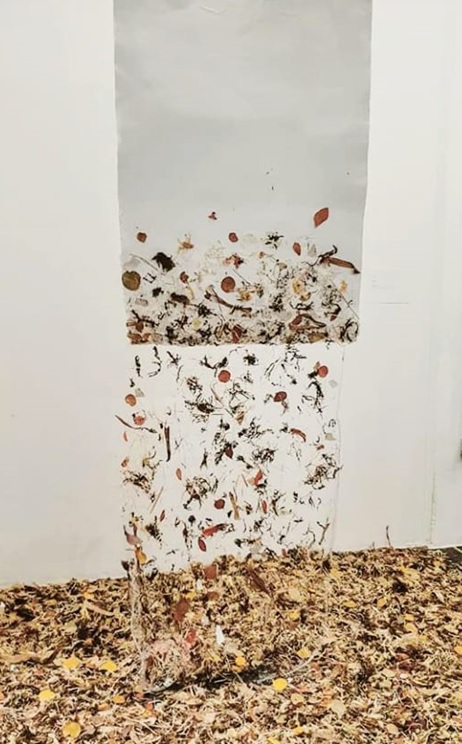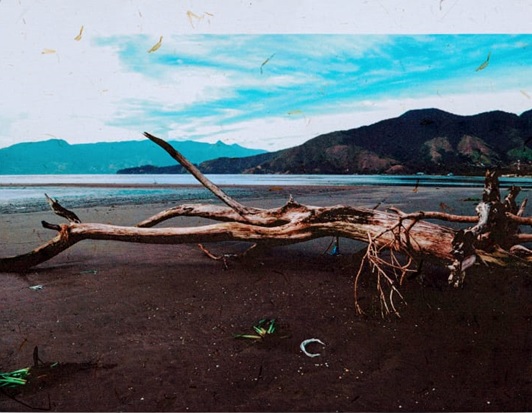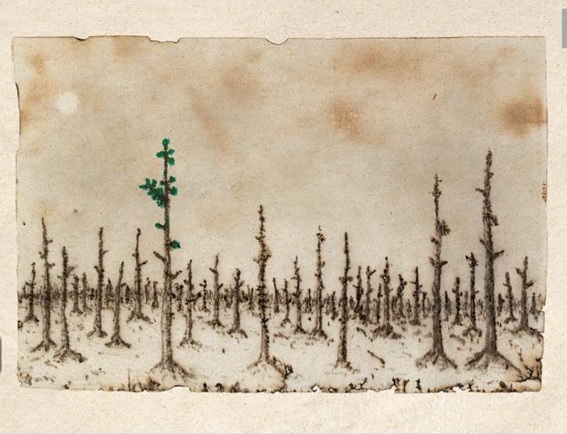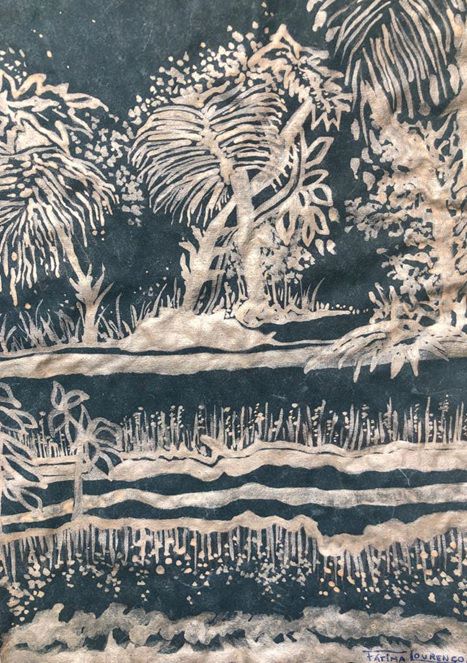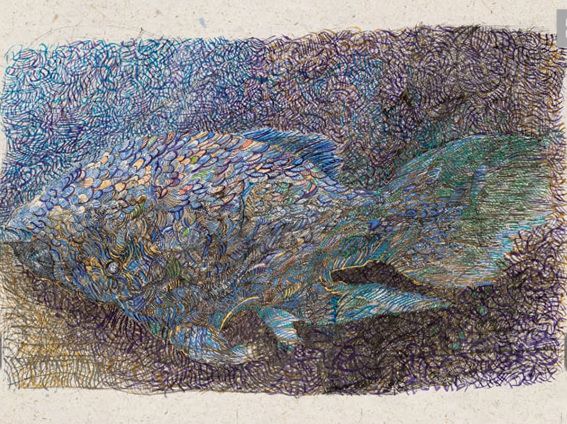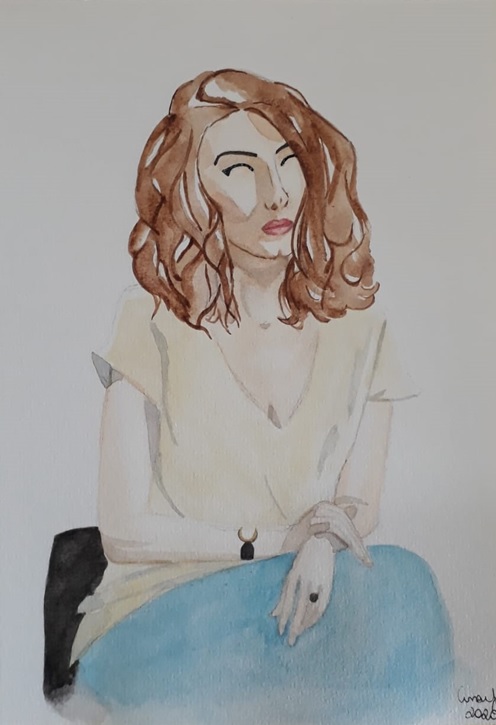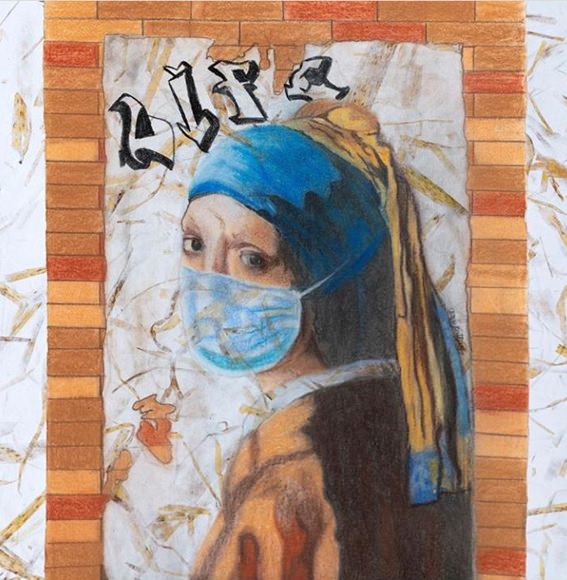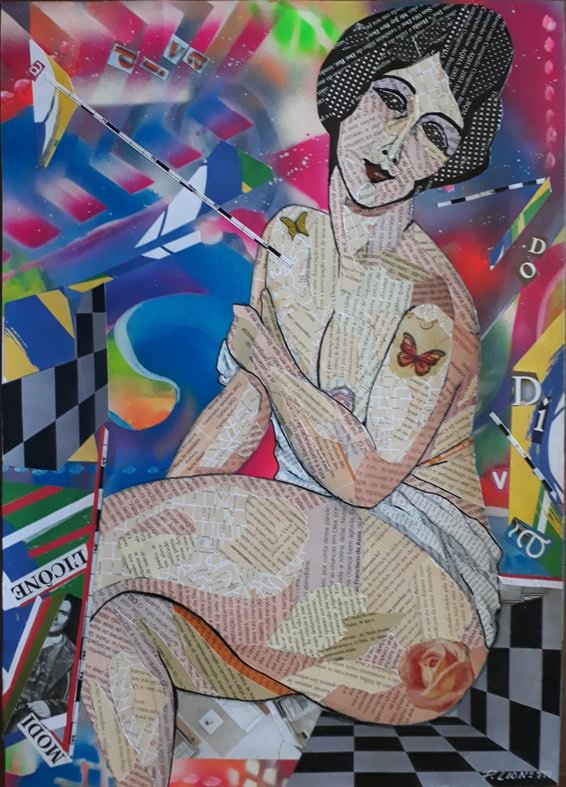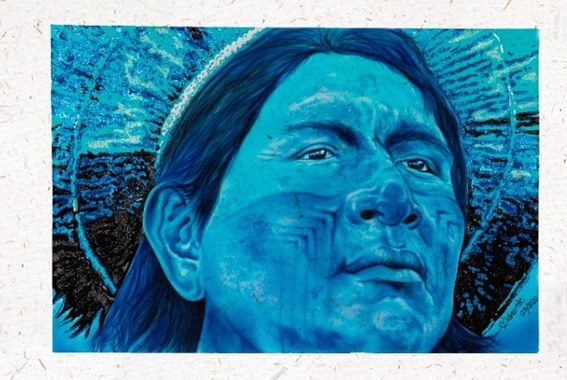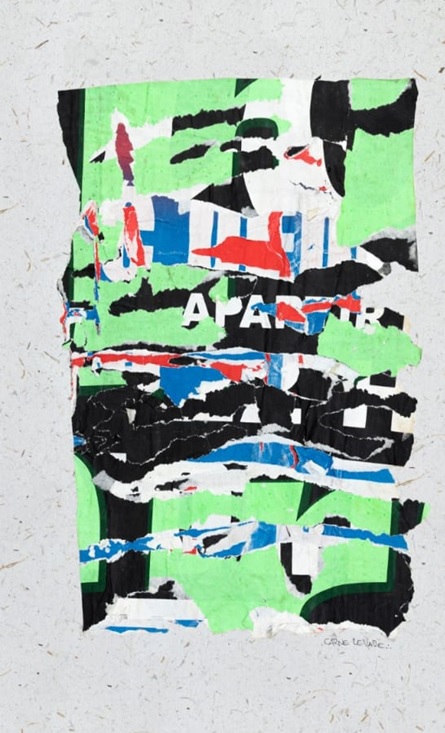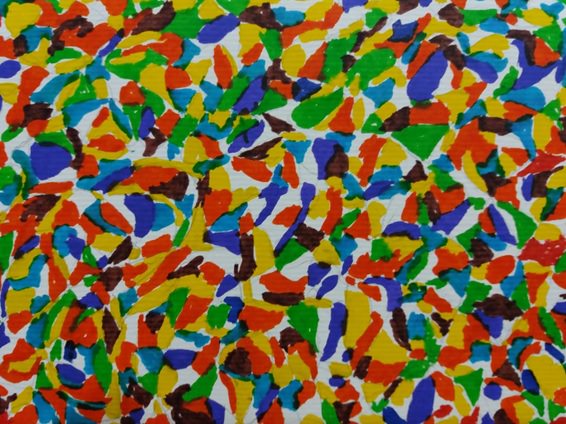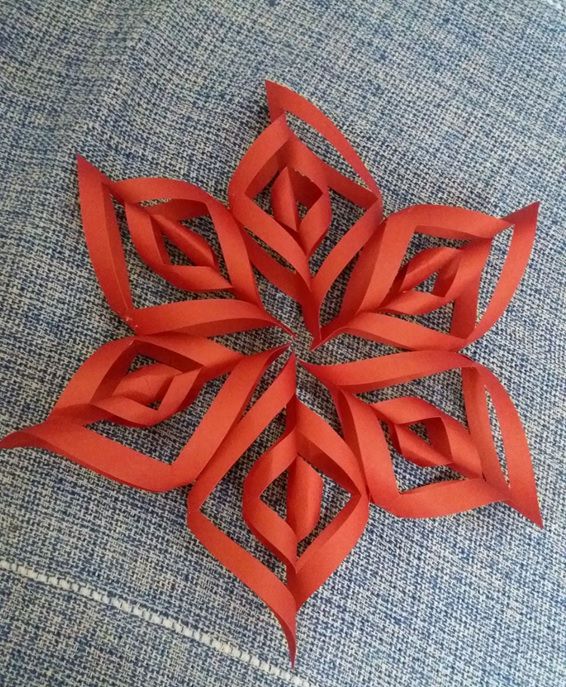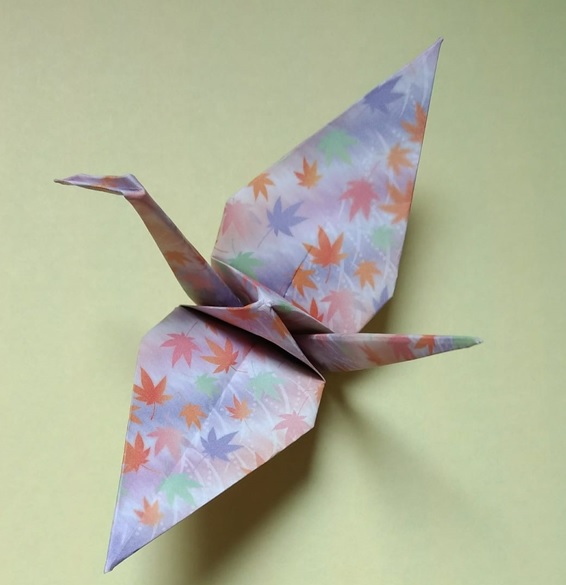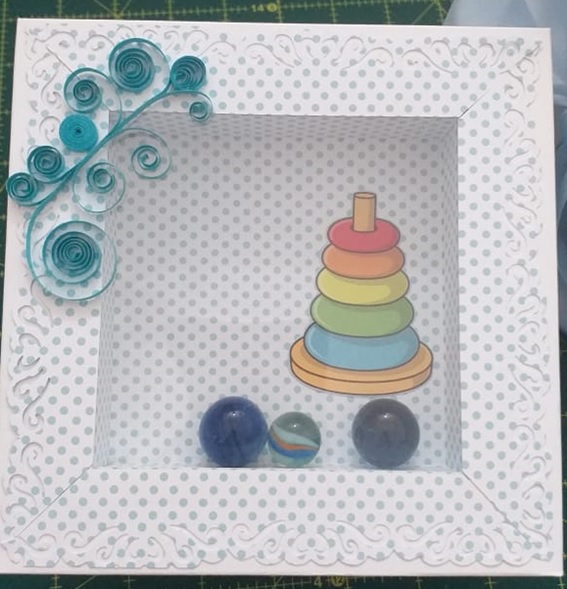
Soak the brush in the blue sea,
in the fire of heaven,
in the soft silver of the fog
covering the mountain.
Soak the brush
in the sunflower light,
in the green body of hope,
and blank paper
spots appear:
a house, a river, is very far
a girl with hands full of stars.
(MURRAY, 2005, p.36)
The lines appear and rise in the very inviting white space. The pencil, the pen or brush slides over the surface eager to receive the idea that insists on chattering in the head of the poet or the painter. And the hand goes running loose, free and fearless. The paper reveals its space and reveals its curves by the letter, by color, by the way. What was then simple thought will now enchant hearts, loosen the throats, relieve weights of souls and expand universes. The paper has witnessed so many outbursts, of countless journeys of the spirit, of agreements and disagreements. He's in the first notebook of the school; in the smell of the new book, at the head of the bed; in the teen's secret diary; or in a breathtaking and passionate note.
The secret, guarded by the Chinese for almost 800 years, today is one of the most consumed products in the world. Even before the paper, writing was already set in stone in Ancient Egypt. The first material that served as a support for writing was the Papyrus, created by the ancient Egyptians, still in the century 40 b.C., made from a very common plant in the region (Fig. 12). At the same time, elsewhere in the world, the Parchment appeared, produced from calfskin, goat or lamb, used even during the Middle Ages. The writing was even registered in wood; on swords and armor; on metals like iron, the copper, silver and gold; and the bark of cooked trees that the Mayans and the Aztecs transformed into a kind of fabric with which they made illustrated books.
Before the invention of paper, the Chinese even used bamboo and silk blades as a support for writing. From rope remains and tree bark, they produced a fiber that, for being cheaper, it replaced silk. Only in the 12th century did this invention reach Europe and, in 1440, the press helped to expand the use of paper. In Brazil, the paper first arrived in Rio de Janeiro, then to São Paulo, in 1809, with the coming of the Royal Family.
And the sheet that supports the Tale, to Poetry, Drawing, or Painting, can be produced from banana stems, of bamboo sticks, pineapple leaves and even onion peels, besides being able to be recycled and serve the artist and poet again. The paper has some museums around the world, like the Tokyo Paper Museum 1 and that of Portugal 2, where you can learn a little more about the History of Paper; know equipment in which they were produced; besides enjoying the works of this material so old and appreciated.
In Art, each type of paper can provide a different effect depending on its acidity, of its weight, of your texture, or the technique used by the artist, taking the gaze of those who appreciate it to delight, through the paths of Belo or Sublime.
Rita Caruzzo's installation (Fig. 1) starts this walk along a beautiful path of leaves, from which the role itself originates. As if they fell, they fill the soil and walk there, colored, weaving drawings, paintings and collages. Midway, the trunk (Fig. 2) who lost her Sonia Botture leaves, it is inert and parched, as if looking for a breath in the sea water, protected under the blue mantle of the sky. With the pyrography technique, the sheet of paper was burnt with electricity and fire, by the hands of the artist Fábio Souza, who built a bleak scene (Fig. 3) and lifeless, softened by the small green leaves that seem to insist on living. The Landscape X of Fátima Lourenço (Fig. 4) it is full of nature. Represented by the delicate monochrome, the dark background highlights the silver color of his watercolor, as if weaving a beautiful embroidery. The Fish of Paulo Sayeg (Fig. 5) swim freely in the blue sea under the reflections that permeate the water. With mixed technique it is possible to recognize lines of blue and lilac tones that intersect to provide the effects of light and dark. Still strolling through the themes of nature, the pink Flamingo of Flavie observes the unspeakable green of the sea.
The seated girl of Ana Vig 3 (Fig. 7) is a well-known presenter. Perfect in color and shape, she is sitting in elegant gesture, with delicate shadow and light effects. Made with the watercolor technique, she is the protagonist of the scene on the white background. Ana Bittar's girl (Fig. 8) was worked with the dry pastel technique. It represents the period of seclusion, wears a mask and is without the famous pearl earring that made her so well known. The other girl (Fig. 9) is in the work of Paulo Lionetti and was worked with the technique of collage on cardboard, coim colored spray background. The slow and sensual feminine gesture stands out amid the colorful surrounding. The work is a reinterpretation of the well-known painting by Modigliani.
The Indian of Maurício Gigante (Fig. 10) it was worked with the technique of airbrushing and its expression of hope matches the expressive look for a future. Also by gluing, Rogério Carnival (Fig. 11) walked through the abstraction field, allowing well-distributed strong colors to alternate between black and white. Like a garden full of wildflowers, by Malu Renó (Fig. 12) it seems full and harmonious, with movement, light and life. Abstraction allows the soul to wander happily through colors and shapes. Your butterflies fly over this beautiful garden.
We still have to talk about Origami, the beautiful Art of Folding, from Japan, whose raw material is also paper. The Red Christmas Flower (Fig. 13) Lucas Alberto's is symmetrical and its perfect lines seem to be woven by nature. They intertwine, as if they were, in endless movement up and down. O Tsuru (Fig. 14) de Vânia Matsubara 4, in delicate colors, looks alive and about to take flight, leading health, peace and harmony for the boiling world. In Japan, according to beliefs, the Gods fulfill requests from the person who makes a thousand Tsurus; and it is common to give sick people with these folds, to wish the person health. Of uncertain origin, the Quilling technique was already used during the Middle Ages. The meticulous and delicate work in which strips of paper are rolled up, forming beautiful drawings and rococo is also made on paper and requires not only the artist's skill, but creativity and its ramblings through imaginary worlds. The Filó box (Fig. 15) it's already a beautiful gift, even though it contains only the deepest dreams and aspirations that innocence can create. Inside may be the leaves that fall on the floor, from Rita; Sonia's parched trunk, that turns into a beautiful tree, rebuilding the entire Fábio forest.
More than enchanting the look, Art has served as a Therapy for those who see and those who produce it. The role goes into all this as the great ally so close and always at hand for what the mind imagines and what the free spirit says and desires. If there is a pen, a pencil or a brush can be written on it, draw or paint. If nothing, only the hands will work and fold the paper until the images appear happy, leaping and light.
Notes:
Sign up to receive Event News
and the Universe of Arts first!
1 Tokyo Paper Museum, Japan:
www.youtube.com/watch?v = GYuKA–QyxQ
2 Paper Museum of Santa Maria, Portugal:
www.youtube.com/watch?v = F24BpVER3RY
3 Ana Vig:
www.instagram.com/anacvig/?hl=pt-br
4 Vânia Matsubara:
bazarpopular.com.br/porfolio-1
References:
- BAYER, Raymond. História da Estética. Lisboa: Editorial Estampa, 1993. Tradução de José Saramago.
- CHILVERS, Ian; ZACZEK, Iain; WELTON, Jude; BUGLER, Caroline; MACK, Lorrie. História Ilustrada da Arte.Publifolha, S.Paulo, 2014.
- SAINT-EXUPÉRY, Antoine de. The Little Prince. Rio de Janeiro: Agir Editora Bookstore, 1977.
- GOMBRICH, E.H. A História da Arte. Rio de Janeiro: Editora Guanabara, 1988.
- HAUSER, Arnold.História Social da Arte e da Literatura. São Paulo: Martins Fontes, 2003.
- ROCHA, Ruth; ROTH, Otavio. The Book of Papel. Flute Paulo: Publisher Improvements, 2005.
- MURRAY, Roseana. Wait, Grape or Apple? São Paulo: Editora Scipione, 2005.
- VIG, Rosângela Araújo Pires. DA ARTE COMO COMUNICAÇÃO À COMUNICAÇÃO COMO ARTE.Comunicação, Cultura e Mídia, Uniso, Sorocaba: 2010. Available in comunicacaoecultura.uniso.br/prod_discente/2010/pdf/Rosangela_Vig.pdf Accessed 25 October 2020.
ROSÂNGELA VIG
Sorocaba – São Paulo
Facebook Profile | Facebook Fan Page | Website
Columnist at Website Obras de Arte
E-mail: [email protected]

